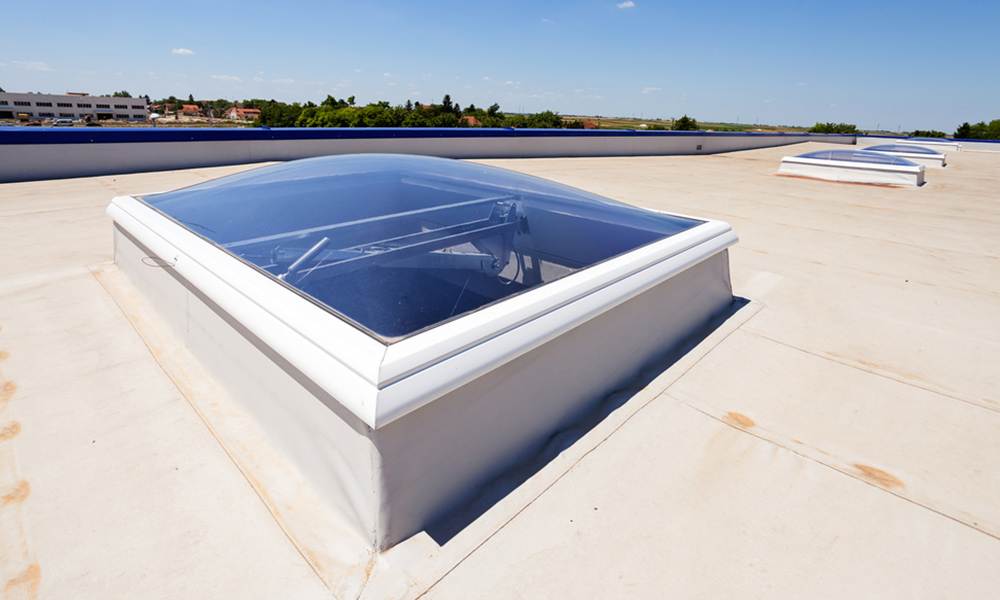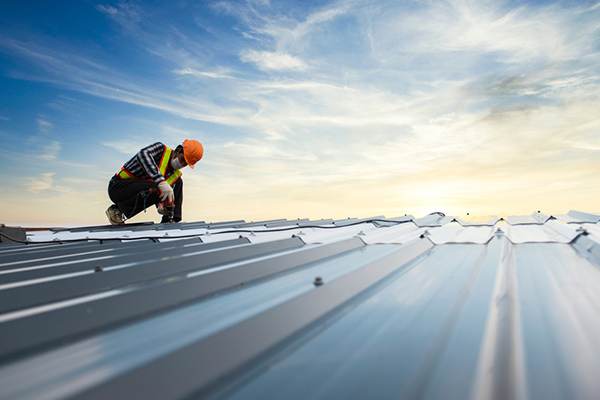Introduction
In commercial architecture, the strategic use of natural lighting can revolutionize the functionality, aesthetics, and energy efficiency of a building. Commercial flat roof skylights stand at the forefront of this design revolution, offering a multitude of benefits beyond simply illuminating spaces.
From enhancing workplace productivity and well-being to contributing significantly to energy conservation goals, these architectural elements are redefining contemporary commercial spaces.
Key Takeaways
- Natural light from skylights in workplaces improves mood and productivity, contributing to enhanced productivity and well-being.
- Skylights significantly reduce the need for artificial lighting, thereby lowering electricity bills and promoting energy efficiency.
- Skylights are instrumental in supporting green construction initiatives, contributing to sustainability and LEED certification goals.
- There is a variety of skylight designs available, each catering to different architectural needs and functional preferences.
- Key considerations in the implementation of skylights include structural integrity, climate adaptability, and the integration of technological advancements like smart sensors.
What are Commercial Flat Roof Skylights?
Commercial flat roof skylights are installations designed to let daylight into commercial structures through the roof, enhancing the internal lighting condition.
These specialized skylights are particularly designed for flat or low-pitch roofs prevalent in commercial buildings.

Benefits of Installing Commercial Skylights
Installing skylights in commercial buildings with flat roofs offers multiple advantages that can enhance the operational efficiency, aesthetic appeal, and overall value of the property. Here are some key benefits:
Natural Light
Skylights introduce more natural daylight into the building, which has been shown to boost mood, productivity, and overall health of those inside. This is particularly beneficial in office environments where increased exposure to natural light can enhance employee performance and satisfaction.
Energy Efficiency
By allowing more daylight into the building, skylights reduce the need for artificial lighting. This decrease in energy consumption can significantly lower electricity bills and contribute to a building’s sustainable, eco-friendly practices.
Aesthetic Appeal
Skylights can dramatically transform a space, making interiors appear more spacious and inviting. This architectural element often increases the aesthetic value of the building, potentially making it more attractive to prospective tenants or clients.
Ventilation
Ventilated or opening skylights can improve air quality and circulation, helping to regulate indoor temperatures without over-relying on HVAC systems. This feature is particularly beneficial in commercial kitchens or manufacturing spaces where air quality is crucial.
Sustainability
In the context of green construction and operations, skylights contribute to the building’s sustainability goals. They reduce the carbon footprint by cutting energy consumption, and when used effectively, they can contribute to certifications like LEED (Leadership in Energy and Environmental Design).
Enhanced Property Value
The modern, high-quality appeal and the energy efficiency of skylights can raise the property’s value. Additionally, buildings that prioritize occupant comfort and well-being are often more competitive in the real estate market.
Marketing And Branding
Businesses can leverage the eco-friendly and innovative aspects of skylights in their marketing strategies. Showing commitment to sustainability and employee well-being can significantly boost a company’s brand image.
Types of Commercial Flat Roof Skylights
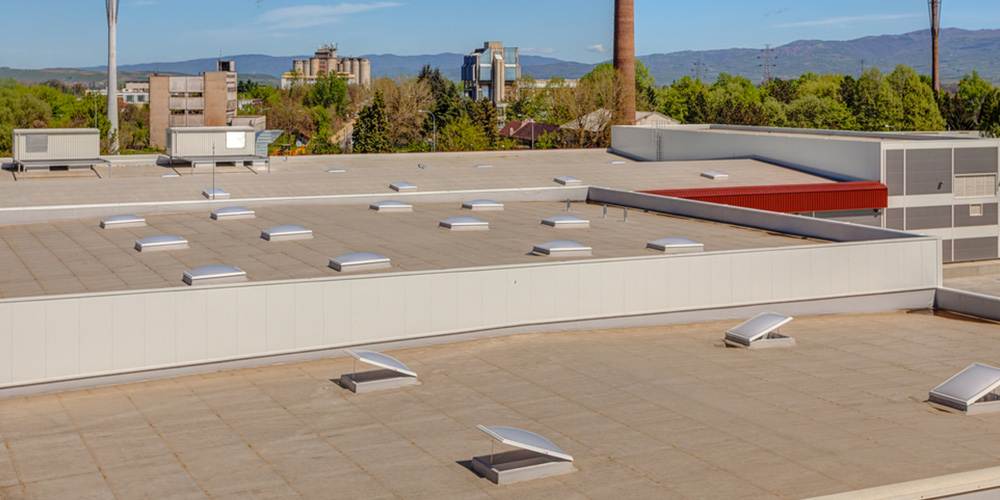
Commercial skylights come in various designs, each serving unique purposes and offering different benefits. Here’s a detailed look at the types:
| Type Of Skylight | Description | Best For |
|---|---|---|
| Fixed Skylights | These skylights are sealed and do not open or close. They’re solely for the purpose of allowing light into a space. | Areas where ventilation is not necessary but natural light is desired, such as office spaces or commercial hallways. |
| Ventilated Skylights | These skylights can be opened to allow for air circulation, providing both light and ventilation. | Commercial areas where both light and fresh air are beneficial, like in restaurant kitchens or manufacturing spaces that can become humid or stuffy. |
| Sun Tunnels or Tubular Skylights | These are small, tube-shaped skylights that channel sunlight through a reflective tube into a room. They’re less invasive and easier to install. | Spaces that could use natural light but are not directly under the roof, such as interior rooms or lower floors in multi-level buildings. |
| Custom Skylights | Custom skylights are specially designed according to specific architectural requirements, including unusual shapes, sizes, or features. | Businesses wanting to create a unique aesthetic or those with specific design constraints due to building architecture. |
| Walkable Skylights | Engineered for durability and strength, these skylights can be safely walked on and are typically used in flat roofs that also serve as pedestrian areas. | Commercial spaces with flat roofs for the benefits they provide including with rooftop access for pedestrians, like rooftop gardens or terraces in hotels or malls. |
| Smart Skylights | Equipped with automated features, these skylights can be remote-controlled, or have sensors for things like rain (closing automatically when rain is detected) or sunlight intensity. | High-tech businesses or those wanting to maximize energy efficiency and convenience in their building’s management. |

Factors to Consider Before Installation
- Assess the roof’s structural integrity to ensure it can support skylights.
- Determine the optimal positioning for light and heat.
- Decide on the size and quantity of skylights necessary for the desired effect.
- Consider the local climate; weather conditions could dictate specific installation and material requirements. For example in very cold climates, roof insulation is a key factor and you don’t want to negate efforts done by insulation by installing skylights inappropriate for the climate.
- Comply with building codes and regulations in your area to avoid legal issues.
Materials and Glazing Options
Choose from various materials like glass or plastic, and glazing options such as clear, frosted, or tinted, depending on light, heat, and UV requirements.
Installation Process
- Professional Assessment And Planning: Involve a commercial roofing expert to evaluate the suitability and plan the process.
- Installation Methods: Employ best practices to ensure watertightness, durability, and safety.
- Timeline: Typically, installation spans a few days but varies based on skylight type and roof condition.
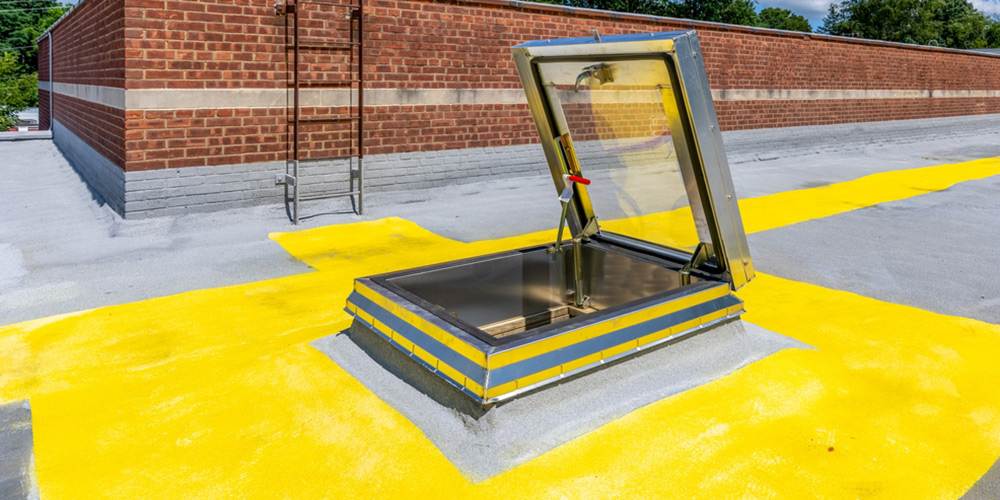
Maintenance and Upkeep
- Regular cleaning ensures maximum light can enter the building.
- Schedule inspections for potential leaks or damages, especially after extreme weather.
- Be aware of the repair and replacement options available.
Cost Considerations
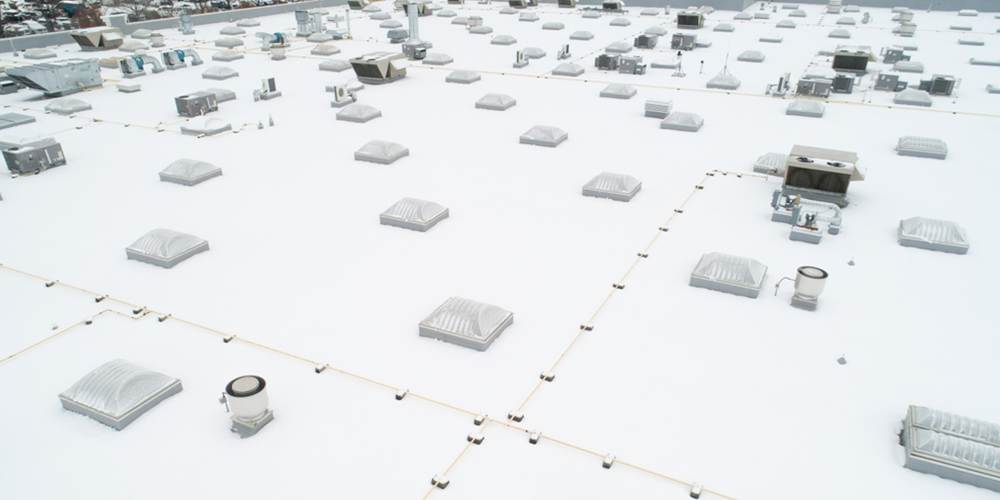
- Costs vary depending on factors such as skylight size, type, materials, and installation complexity.
- Skylights can provide a return on investment by reducing energy costs and increasing property value.
- Explore financing options and check if your insurance could cover skylight installations.
Innovations and Future Trends
- Technological advancements include smart sensors for automatic opening or closing and sustainable materials for green building compliance.
- An emerging trend is the integration of skylights in holistic building designs favoring natural lighting, contributing to the building’s energy efficiency and occupant well-being.
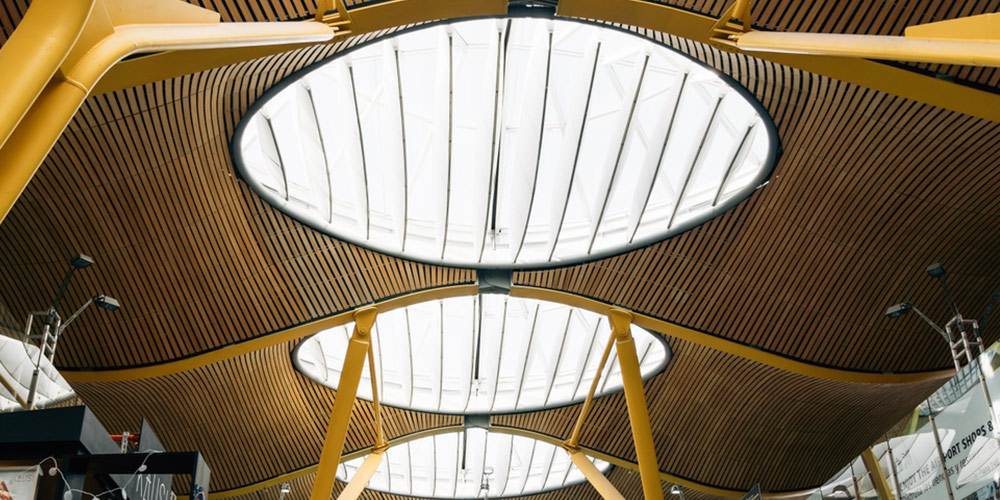
Conclusion
Embracing commercial skylights is more than an architectural decision; it’s an investment in the future of any commercial space. The positive benefits they offer, ranging from operational cost reductions due to improved energy efficiency to the intangible benefits on human health and productivity, are transformative.
With an array of types to choose from, businesses can find a skylight solution that fits their unique needs, aesthetic preferences, and sustainability goals. Moreover, as technology advances and the focus on green building intensifies, skylights are poised to become not just an option, but a standard, reflecting the ethos of responsibility towards both the inhabitants and the environment.
Frequently Asked Questions
How do commercial flat roof skylights benefit a building?
Skylights improve natural lighting, which can reduce energy costs and enhance the aesthetic appeal and work environment. They also can improve ventilation if they are operable.
What are the common types of skylights used for flat commercial roofs?
Common types include fixed, vented, and tubular skylights. Fixed skylights are sealed, vented can be opened for air flow, and tubular offers a compact design for smaller spaces.
What are the maintenance requirements for commercial flat roof skylights?
Regular cleaning to remove debris and checks for leaks or damage are essential. Also, ensuring that the seals and flashing remain intact is crucial to prevent water damage.
Are there any specific building codes or regulations for installing skylights in commercial buildings?
Yes, building codes vary by region and often dictate size, placement, and the type of glass used for safety and energy efficiency. It’s important to consult local building codes before installation.

